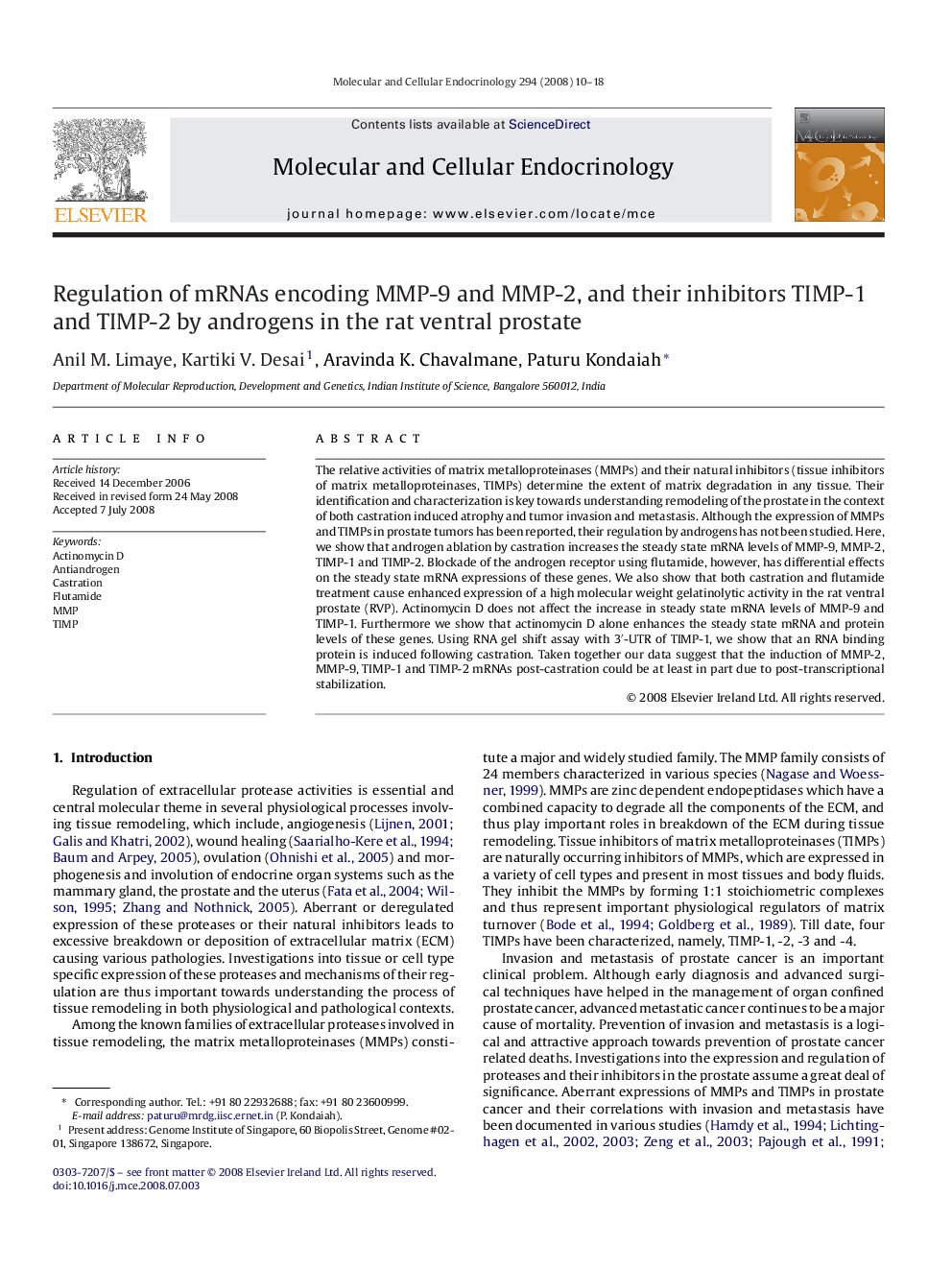| Article ID | Journal | Published Year | Pages | File Type |
|---|---|---|---|---|
| 2197572 | Molecular and Cellular Endocrinology | 2008 | 9 Pages |
The relative activities of matrix metalloproteinases (MMPs) and their natural inhibitors (tissue inhibitors of matrix metalloproteinases, TIMPs) determine the extent of matrix degradation in any tissue. Their identification and characterization is key towards understanding remodeling of the prostate in the context of both castration induced atrophy and tumor invasion and metastasis. Although the expression of MMPs and TIMPs in prostate tumors has been reported, their regulation by androgens has not been studied. Here, we show that androgen ablation by castration increases the steady state mRNA levels of MMP-9, MMP-2, TIMP-1 and TIMP-2. Blockade of the androgen receptor using flutamide, however, has differential effects on the steady state mRNA expressions of these genes. We also show that both castration and flutamide treatment cause enhanced expression of a high molecular weight gelatinolytic activity in the rat ventral prostate (RVP). Actinomycin D does not affect the increase in steady state mRNA levels of MMP-9 and TIMP-1. Furthermore we show that actinomycin D alone enhances the steady state mRNA and protein levels of these genes. Using RNA gel shift assay with 3′-UTR of TIMP-1, we show that an RNA binding protein is induced following castration. Taken together our data suggest that the induction of MMP-2, MMP-9, TIMP-1 and TIMP-2 mRNAs post-castration could be at least in part due to post-transcriptional stabilization.
